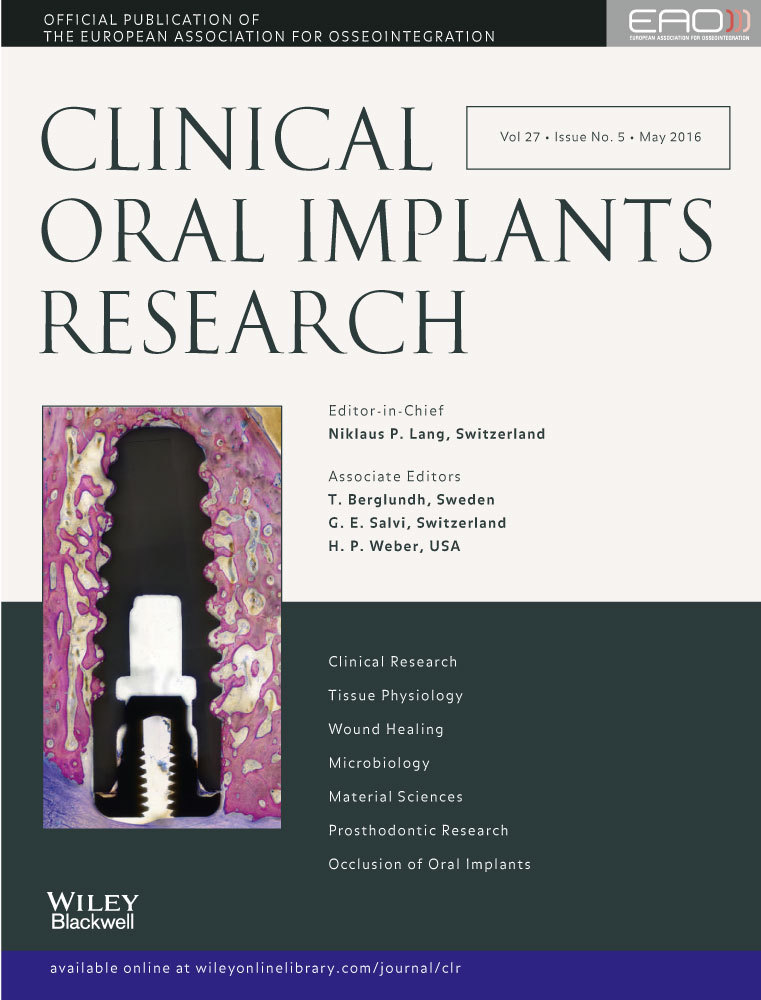Effect of double conical abutment screw on implant preload
Abstract
Objective
This study compared the loosening torque of experimental double conical abutment screws to that of conventional conical abutment screws and flat-head screws in implants with internal connections before and after mechanical loading.
Material and methods
Eighty implant–screw–abutment assemblies were divided into four groups: flat-head screw (Xive S), conical screw (Straumann), conical screw (Nobel Biocare), and double conical screw (RTB). Abutments were tightened to a torque of 30 Ncm. After 10 min, they were retightened and loosening torque was measured. The same abutments were then retightened with new screws to a torque of 30 Ncm and, again, retightened after 10 min. They were then mechanically loaded for 3 000 000 cycles, and loosening torque was again measured. Data were collected, and an exploratory analysis was performed.
Results
Comparisons before mechanical cycling showed significant differences between groups. After mechanical cycling, only the comparisons of Straumann and Nobel Biocare showed no significant differences. Considering the same group before and after mechanical cycling, all comparisons showed significant differences.
Conclusion
The shape of the abutment screw head significantly influenced loosening torque: Double conical-head screws showed significantly higher loosening torque values than conical-head screws. Conical-head screws showed higher loosening torque values than conventional flat-head screws before and after loading.




